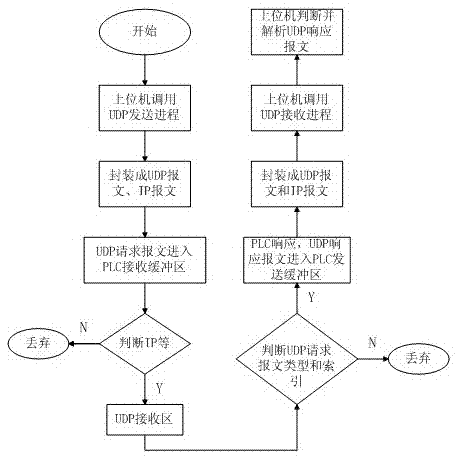UDP-based communication method and system for wind power generators
A technology for a wind turbine and a communication method, which is applied in the field of network communication, can solve the problems of occupying a lot of system resources, slow TCP/IP protocol communication speed, etc., and achieves the effects of less resource occupation, efficient and reliable communication scheme, and improved performance.
- Summary
- Abstract
- Description
- Claims
- Application Information
AI Technical Summary
Problems solved by technology
Method used
Image
Examples
Embodiment
[0037] The upper computer sends a UDP request message to the PLC, and the data in the message "tells" the PLC what information it needs. After receiving the UDP request message, the PLC sends a UDP response message to the upper computer, which contains the corresponding information. , whose communication structure is as figure 2 .
[0038] The UDP packet structure is as follows image 3 As shown, each UDP message is divided into two parts: the UDP header and the UDP data area. The UDP protocol stipulates that the UDP header consists of 4 fields, and the length is fixed at 8 bytes. Each field occupies two bytes, respectively The source port number, destination port number, UDP length and checksum, and UDP data area are defined by the developer.
[0039] The upper computer sends a UDP request message to the PLC, the source port number is 1026 (the port number can be determined according to the actual situation, usually use a port number above 1000 to avoid conflicts with othe...
PUM
 Login to View More
Login to View More Abstract
Description
Claims
Application Information
 Login to View More
Login to View More - R&D Engineer
- R&D Manager
- IP Professional
- Industry Leading Data Capabilities
- Powerful AI technology
- Patent DNA Extraction
Browse by: Latest US Patents, China's latest patents, Technical Efficacy Thesaurus, Application Domain, Technology Topic, Popular Technical Reports.
© 2024 PatSnap. All rights reserved.Legal|Privacy policy|Modern Slavery Act Transparency Statement|Sitemap|About US| Contact US: help@patsnap.com










